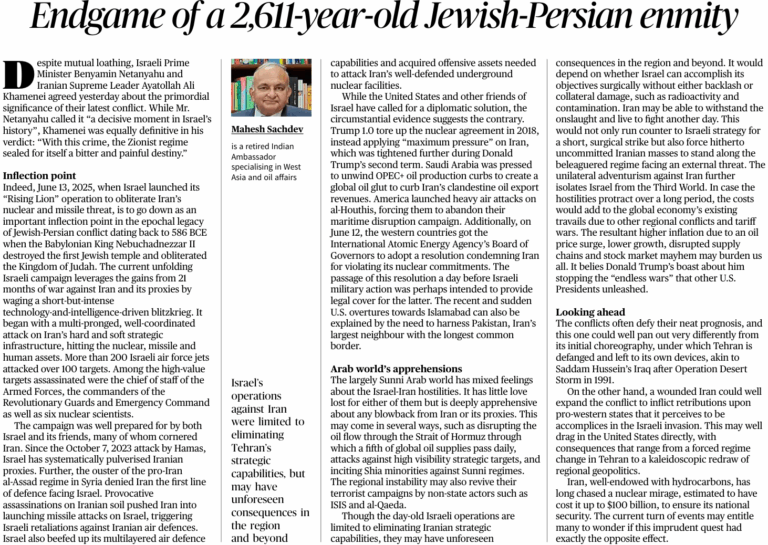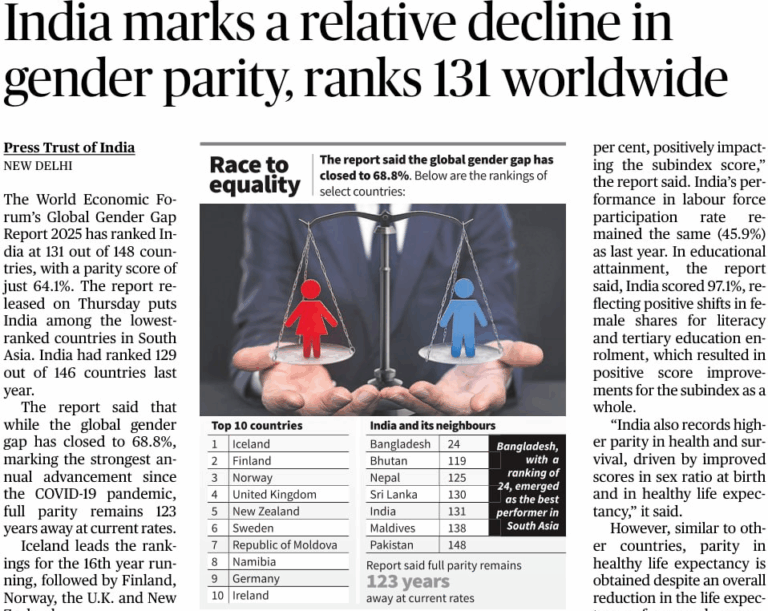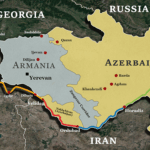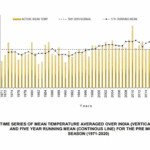India Needs to Ensure Women’s Participation in Policymaking
Why in the News?
Women’s Participation in Policymaking: India has slipped two ranks in the World Economic Forum’s Global Gender Gap Index 2025, now ranking 131st out of 148 countries. With a gender parity score of just 64.1%, India ranks among the lowest in South Asia.
- While incremental gains were made in economic participation, education, and health, the significant drop in political empowerment of women, particularly the reduction in female representation in Parliament and ministerial roles, has dragged the country’s overall performance.
- These figures underscore a deeper malaise – the inadequate role of women in shaping policies and decisions that directly affect their lives and society at large.

Background
The Global Gender Gap Index, introduced by the World Economic Forum (WEF) in 2006, evaluates gender-based disparities across four key dimensions:
- Economic participation and opportunity
- Educational attainment
- Health
- Political empowerment
India’s overall performance in the index has historically been poor, with the political empowerment and economic participation subindices being the weakest links. The latest report (2025) indicates that despite marginal improvements in income parity and labour force participation, India’s political gender gap has widened:
- Female representation in Parliament decreased from 14.7% (2024) to 13.8% (2025).
- Women in ministerial positions dropped from 6.5% to 5.6%.
This comes at a time when India has already passed the Women’s Reservation Bill (2023), which promises to reserve 33% seats for women in Parliament and State Assemblies, but its implementation is deferred until 2029, post delimitation and census.
Feature: Understanding the Gender Gap in Policymaking
Economic Participation and Opportunity
- India has seen a modest improvement (+0.9%) in this area.
- Estimated earned income parity improved from 28.6% to 29.9%.
- Labour force participation remained stagnant at 45.9%, India’s best yet.
- Structural gender biases continue in employment, wages, and leadership roles.
Educational Attainment
- India has achieved near-parity in primary and secondary education enrollment.
- However, education is not translating into proportional workforce representation or leadership roles.
- The pipeline from school to leadership remains fractured for women.
Health and Survival
- Improved slightly due to better access to maternal health and basic health services.
- However, skewed sex ratio at birth (SRB) and female foeticide remain issues in certain states.
Political Empowerment
- The biggest driver of India’s poor performance.
- Decline in women’s share in Parliament and ministerial roles.
- Despite landmark bills, execution remains distant and delayed.
Challenges in Women’s Political Participation
Delayed Implementation of the Women’s Reservation Act
- Though passed in 2023, implementation is tied to the next delimitation post the 2026 census, with real impact expected only after 2029.
- Political parties are not bound to implement quotas before that, leading to continued underrepresentation.
Tokenism and Lack of Leadership Roles
- Women who do make it to political office often do so as proxy candidates, especially in local governance.
- Few women hold cabinet-level ministries or have decision-making powers.
- Patriarchal party structures limit women from rising through the ranks.
Lack of Party-Level Quotas
- Unlike countries like Sweden or Rwanda, where political parties follow voluntary gender quotas, Indian parties are not obligated to field women candidates beyond token gestures.
- In the 2019 Lok Sabha elections, only 8% of the total candidates fielded by major parties were women.
Gender Stereotypes and Societal Barriers
- Deep-rooted cultural and social beliefs often discourage women from joining politics.
- Safety concerns, lack of support networks, and gendered responsibilities further marginalise women’s role in public life.
Disproportionate Media Coverage and Public Scrutiny
- Women in politics often face harsh media treatment, focusing more on their appearance, family roles, or relationships than on their political acumen.
- Online trolling and gendered abuse on social media platforms further deters participation.
Economic Dependence and Lack of Funding
- Women often lack the financial backing required to contest elections.
- Male-dominated donor networks and business lobbies rarely support women candidates.
Comparative Global Experiences
Rwanda
- The global leader in women’s political representation, with over 60% of women in Parliament.
- Constitutionally mandated quotas and strong post-conflict institutional reforms.
Nordic Countries
- Nations like Norway, Sweden, and Finland have voluntary party quotas, robust gender equality laws, and family-friendly public policies.
Latin America
- Countries such as Mexico and Argentina have enacted parity laws ensuring 50% representation of women in elected offices.
Lessons for India:
- Quotas must be matched with political will, legal backing, and grassroots social support.
- Capacity-building and leadership development programs for women are critical.
Way Forward: Bridging the Gap
Advance the Timeline for Women’s Reservation
- The 33% quota in Parliament and Assemblies should not be delayed till 2029.
- Interim targets and voluntary implementation by parties can fast-track representation.
Mandatory Political Party Quotas
- Enforce compulsory candidate quotas (e.g., 33% tickets for women) for recognised parties through Election Commission guidelines.
- Tie party funding incentives or de-recognition to gender representation compliance.
Capacity-Building and Political Training
- Create specialised academies or training programs for aspiring women politicians, similar to civil services coaching.
- Fund mentorship networks, workshops, and exposure trips for women in grassroots politics.
Women’s Political Finance and Support Networks
- Establish public funds or subsidised loans for women candidates to contest elections.
- Encourage women’s business lobbies and civil society groups to fundraise for women-led campaigns.
Combat Gender Bias in Media and Public Discourse
- Introduce media codes of conduct to curb gendered reporting.
- Promote public awareness campaigns to normalise and celebrate female leadership.
Strengthen Local Governance Pipelines
- Leverage the 33% reservation in Panchayati Raj Institutions (PRIs) to build a bottom-up political culture.
- Invest in education, digital literacy, and legal awareness for women elected at the local level.
Judicial and Legal Interventions
- The Supreme Court and High Courts can play a proactive role in upholding the spirit of gender equality under Articles 14, 15, and 16 of the Constitution.
- Fast-track cases of discrimination and violence against women in public life.
Conclusion
India’s democratic legitimacy and developmental progress are incomplete without equal participation of women in policymaking. The Global Gender Gap Index 2025 acts as a mirror, reflecting systemic barriers that continue to keep half of the population from political power. The passage of the Women’s Reservation Act was historic, but its delayed implementation threatens to reduce it to symbolism. Ensuring true gender parity in politics is no longer a question of feasibility – it is a moral and constitutional imperative.
FAQ: Women in Policymaking in India
1. What is the Global Gender Gap Index, and how does India perform in it?
The Global Gender Gap Index, published annually by the World Economic Forum, measures gender parity across economic participation, education, health, and political empowerment. In 2025, India ranked 131st out of 148 countries, with political empowerment being the weakest dimension.
2. Why is the political empowerment of women in India declining?
Between 2024 and 2025, the proportion of women in Parliament dropped from 14.7% to 13.8%, and women in ministerial roles fell from 6.5% to 5.6%. This decline persists despite the passage of the Women’s Reservation Bill, whose implementation has been postponed until after the 2029 elections.
3. How do other countries ensure women’s participation in policymaking?
- Rwanda: Over 60% of women in Parliament are through constitutional quotas.
- Nordic countries: Use of voluntary party quotas and gender-sensitive laws.
- Latin American countries: Enforced parity laws for candidate representation.
MAINS PRACTICE QUESTION
Question: India’s democratic framework remains incomplete without gender-balanced political representation.” Critically examine in light of the Global Gender Gap Report 2025.
PRELIMS PRACTICE QUESTION
Q. Regarding the Global Gender Gap Index 2025, consider the following assertions:
Assertion (A): India’s political empowerment score has declined despite passing the Women’s Reservation Act.
Reason (R): The Act’s implementation is subject to future delimitation and census exercises.
Which of the following is correct?
Also Read: India Marks a Relative Decline in Gender Parity, Ranks 131 Worldwide







